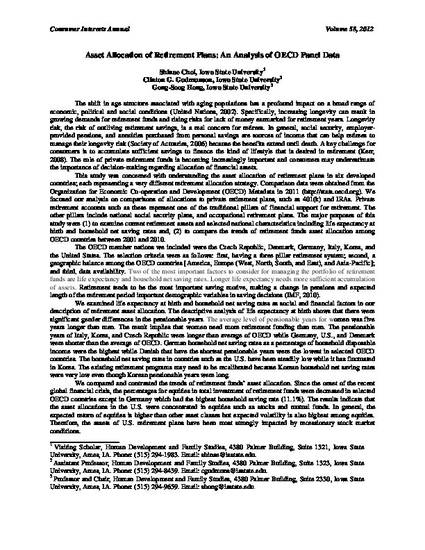
The shift in age structure associated with aging populations has a profound impact on a broad range of economic, political and social conditions (United Nations, 2002). Specifically, increasing longevity can result in growing demands for retirement funds and rising risks for lack of money earmarked for retirement years. Longevity risk, the risk of outliving retirement savings, is a real concern for retirees. In general, social security, employer-provided pensions, and annuities purchased from personal savings are sources of income that can help retirees to manage their longevity risk (Society of Actuaries, 2006) because the benefits extend until death. A key challenge for consumers is to accumulate sufficient savings to finance the kind of lifestyle that is desired in retirement (Kerr, 2008). The role of private retirement funds is becoming increasingly important and consumers may underestimate the importance of decision-making regarding allocation of financial assets.
Available at: http://works.bepress.com/clinton_gudmunson/3/

This article is from Consumer Interests Annual 58 (2012): 2 pp. Posted with permission.